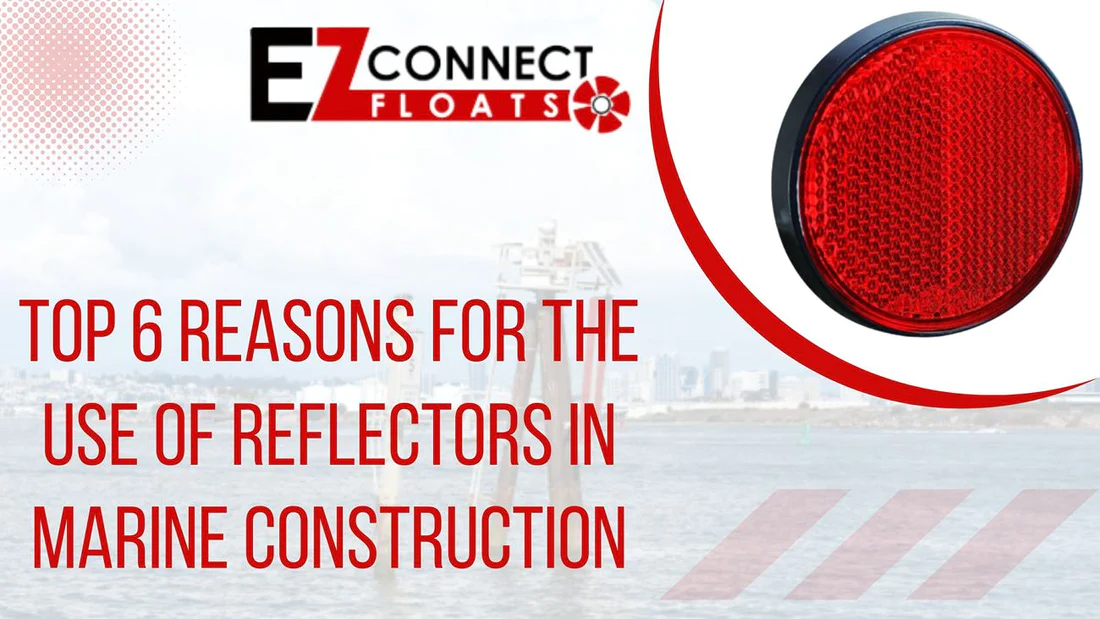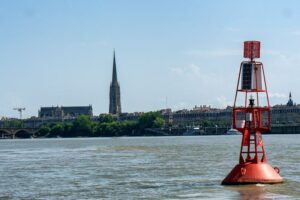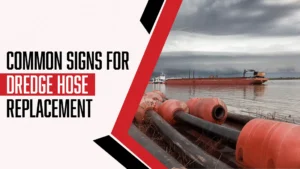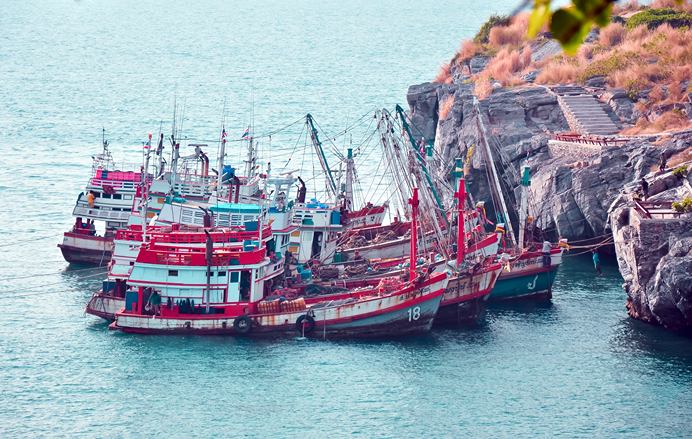
6 Key Reasons to Use Reflectors in Marine Construction
Marine construction is a difficult and complicated job. It includes constructing ports and offshore structures and providing navigational aids. Safety and speed are the most essential things in these projects, and reflectors are an often overlooked but important part of both. The use of reflective devices in marine construction equipment plays a significant role in enhancing visibility. They ensure the safety of vessels and optimize construction operations in the marine environment.
The article highlights the importance of reflectors in marine construction projects and how high-quality reflectors can create a safe working environment. Check out the wide range of reflectors for marine construction on the EZ Connect Floats website.
Why are reflectors essential for marine construction?
Marine construction is one of the toughest construction situations. Adverse winds, high tides, and low visibility are major challenges requiring advanced and practical solutions like reflectors.

Caption: A navigational channel marked with reflectors
1. Promoting visibility and navigation
Visibility is very important in marine buildings, especially at night or in bad weather. Reflectors made of reflective materials or retro reflective technology can help when there isn’t enough light or sight. These devices are strategically placed on structures, floating buoys, or construction equipment.
These reflectors reflect light to their source, making them very noticeable to ships and marine workers. By making things more visible, reflectors reduce the chance of accidents and make it easier to navigate safely. Using reflectors for enhancing safety in marine construction ensures man, machine and materials are safe. Therefore, organizations use reflectors for improved visibility in marine construction.
Caption: Multi-purpose EZ Connect Float reflectors
2. Ensuring safe working environments
At marine building sites, there are often a lot of boats, machines, and workers, all working simultaneously. Reflectors are very helpful for marking safety zones and indicate possible dangers. These reflective markers can be put on underwater buildings, rocks, or pipes to let workers and navigators know they are there. Reflectors help avoid accidents and injuries by making it easy to see where possible dangers are. This makes the workplace safer.
3. Optimizing construction operations
Efficiency is a key part of any building job, and marine building is no different. There are many benefits of using reflectors in marine construction beyond safety, like making building work more efficient. For example, markings or reflective tape on temporary structures, floating platforms, or buoys can help with accurate positioning and alignment.
This process ensures that building measurements are accurate and makes installation easier. Reflectors also help project managers and surveyors keep an eye on how the construction is going by letting them look at the work from a distance and make any necessary changes.
Caption: A fishing boat marked with Reflectors
4. Delineating boundaries
Reflectors are useful in marine conditions as they clearly determine boundaries and identify limits in marine construction sites. Reflectors can mark restricted areas, no-entry zones, or navigation channels, ensuring compliance with safety regulations and preventing unauthorized access.
5. Compliance with regulations
Reflectors are often a requirement by regulatory bodies in marine construction projects. By incorporating reflectors per regulatory guidelines, construction companies demonstrate their commitment to safety and adherence to industry standards. This avoids potential penalties or legal complications.
6. Sustainable Solutions and environmental considerations
In recent years, environmental considerations have become increasingly important in marine construction. Reflectors can contribute to sustainable practices by minimizing the need for excessive lighting, which can disturb marine ecosystems and wildlife. Marine reflectors utilize retroreflective technology to reflect light toward the source. Therefore, rather than scattering it in all directions, reflectors help reduce light pollution and its associated ecological impacts.
Why choose EZ Connect Floats?
EZ Connect Floats reflectors are specially designed for marine construction where normal reflectors cannot work efficiently. Made with high-quality materials, these reflectors are visible from a long distance, even in bad weather.
The robust design and construction make these reflectors durable and harsh weatherproof. High-quality reflectors by EZ Connect Floats minimize maintenance and repair costs. You can contact us for a free sales quote.
Final words
Reflectors play a crucial role in marine construction by enhancing visibility, ensuring safety, and optimizing construction operations. These unassuming devices contribute to a safer working environment by promoting visibility and navigation, demarcating hazards, and optimizing construction processes.
Moreover, reflectors offer sustainable solutions by reducing light pollution and its impact on marine ecosystems. As technology advances, reflectors are poised to become even more versatile and intelligent, further revolutionizing the field of marine construction. By harnessing the power of reflectors, we can illuminate the seas and construct a safer, more efficient future.
Frequently asked questions about marine reflectors
1. What are the different types of reflectors used in marine construction projects?
Some common types of marine reflectors are
- Tapes and Reflective Markers in marine construction activities: They are made of reflective materials with a sticky back that can be stuck to buildings, equipment, buoys, and other surfaces.
- Retroreflective Reflectors: Retroreflective reflectors are specifically designed to redirect light back to its source, providing excellent visibility.
- Reflectorized Buoys: Reflectorized buoys are equipped with reflectors that enhance their visibility.
- Photoluminescent Reflectors: Photoluminescent reflectors absorb and store ambient light energy and then emit it gradually over time.
2. Where are reflectors typically placed in marine construction projects?
Reflectors in marine construction projects are strategically placed in various locations to maximize visibility, ensure safety, and optimize construction operations. The placement depends on the project requirements, site conditions, and the purpose they serve. Some common locations are:
- Structures and buildings
- Buoys and navigational aids
- Equipment and machinery
- Safety zones and hazardous areas
- Underwater structures
- Temporary installations
- Obstacles and potential hazards
3. How can reflectors mark underwater structures in marine construction projects?
In marine building projects, reflectors can highlight submerged structures for easy identification and precise placement. Some common use of reflectors as underwater building markers is described below.
- Reflectors for marking underwater structures in marine construction
- Underwater reflective panels for long-term visibility
- Embedded reflective elements are integrated into the structure’s surface.
- Underwater reflective paint or coatings to make the structures easily identifiable underwater.
4. How can reflectors enhance underwater visibility in marine construction projects?
In marine building projects, reflectors can improve underwater visibility. Their reflective characteristics help to make items and structures more visible. Some of the ways reflectors improve underwater vision are as follows.
- Increased light reflection
- Enhanced contrast and depth perception
- Visibility in low-light or murky conditions
- Aiding navigation and orientation
- Safety and accident prevention
5. What are reflectors?
Reflectors redirect light to its source. High-reflectivity materials are used to reflect light waves. Reflectors are solid surfaces, tapes, or coatings. With the advancement of technology, smart reflectors are now highly used. These reflectors have sensors and connections built in. These innovative reflectors can send real-time information about visibility, structural stability, and environmental conditions.
Have Questions?
Get in touch with us now!
Related Blogs

The Role of Industrial Hose Supply in Workplace Safety and Efficiency
In high-stakes industries such as oil and gas, mining, manufacturing, dredging, and defense, industrial hoses serve as vital connectors in daily operations. Whether transferring hazardous

Common Signs For Dredge Hose Replacement
Dredge hose is an essential component in mining, oil and gas, and heavy industries, where it is used to transport materials such as sediment, slurry,

The Role of Automation and AI in Next-Generation Dredging Technology
Dredging technology has undergone a quiet but powerful transformation over the past decade. A purely mechanical process, which included heavy machinery, manual supervision, and reactive


